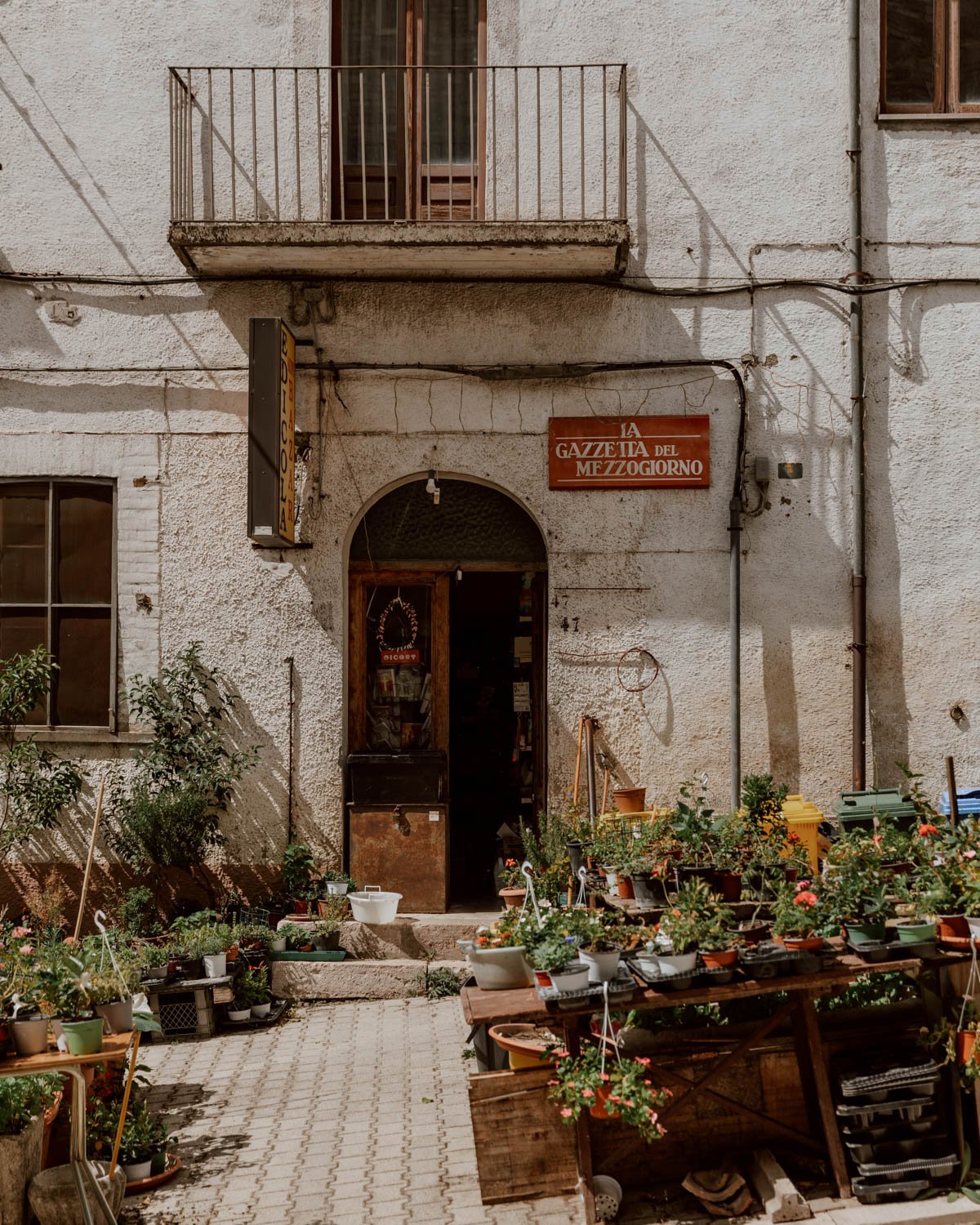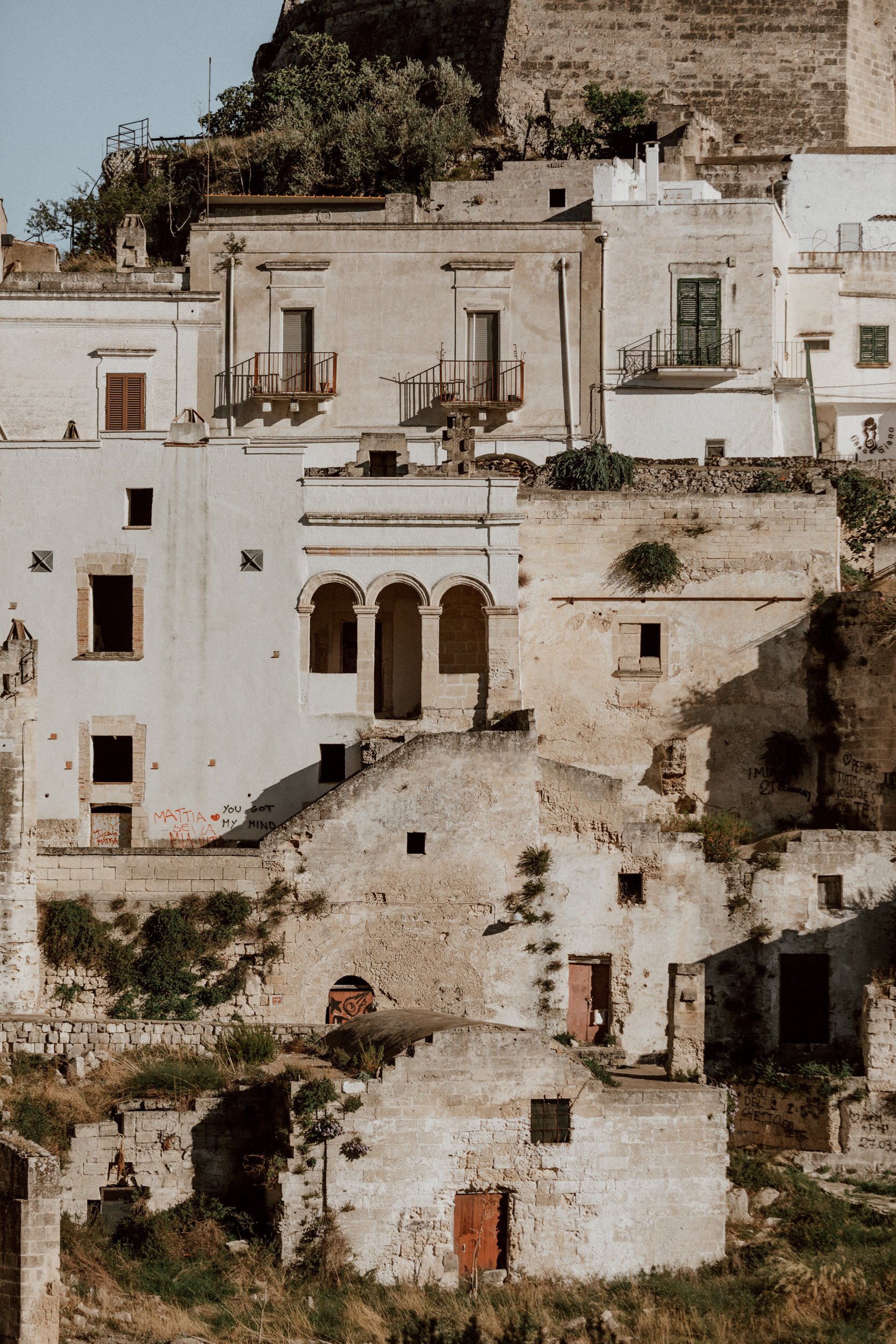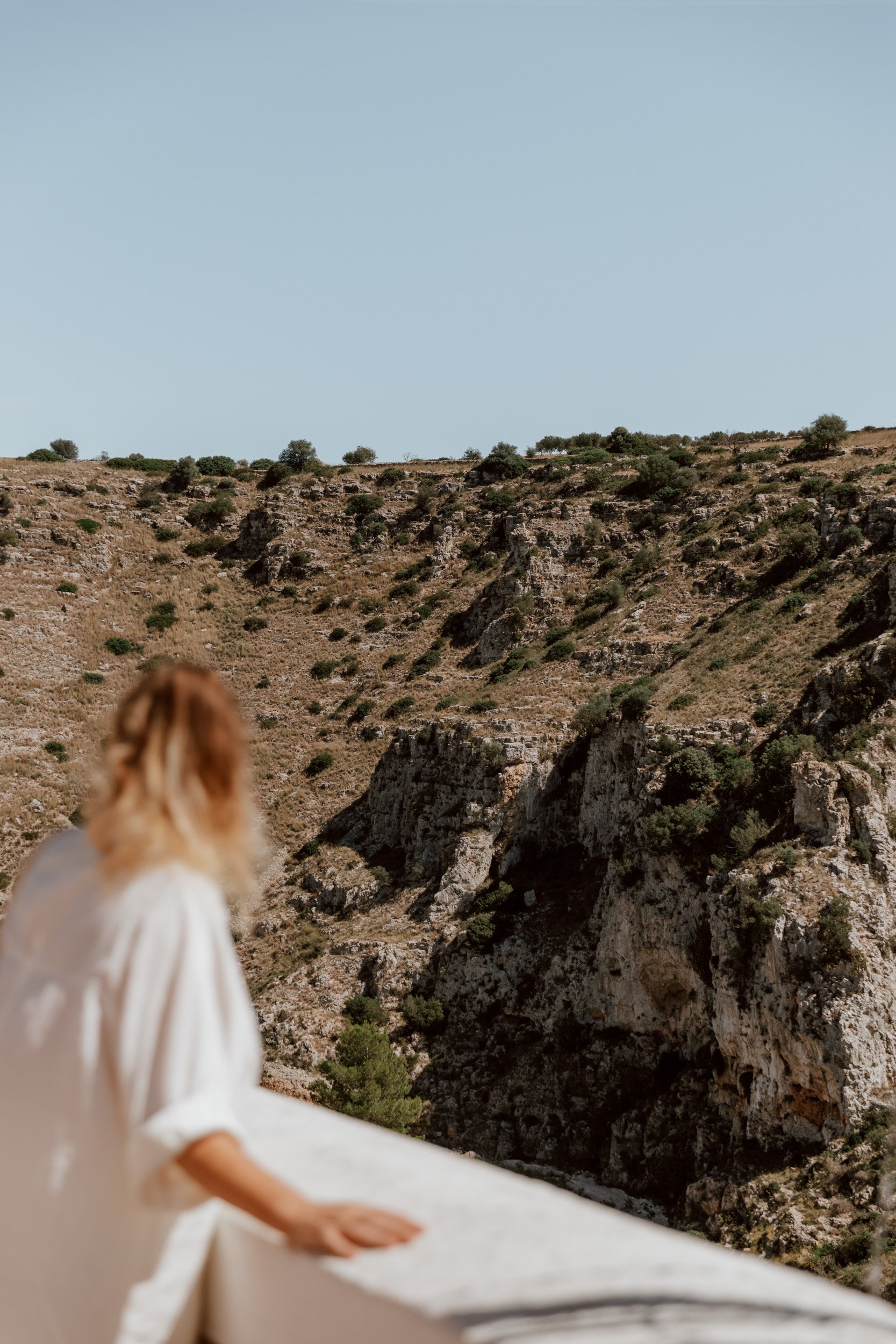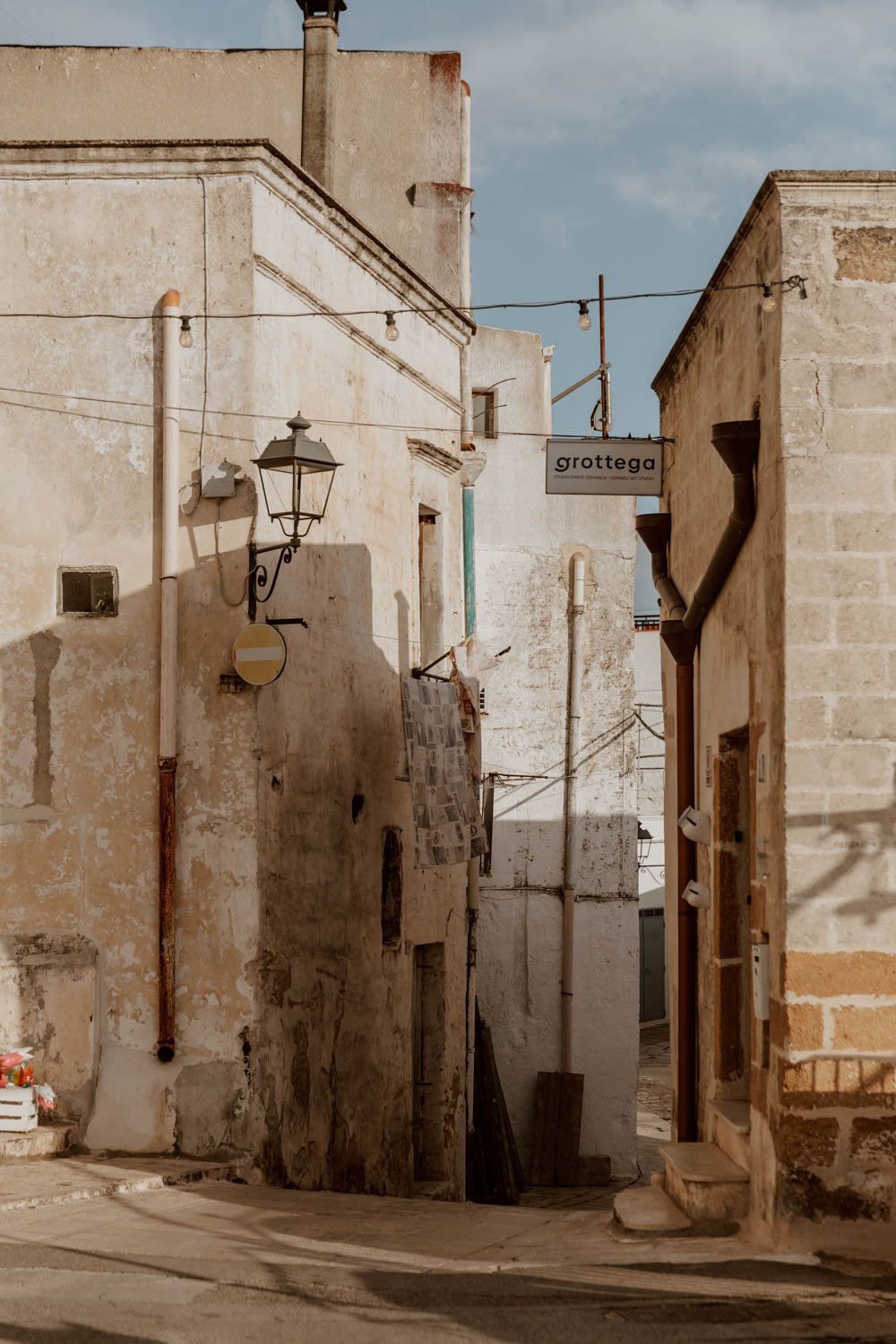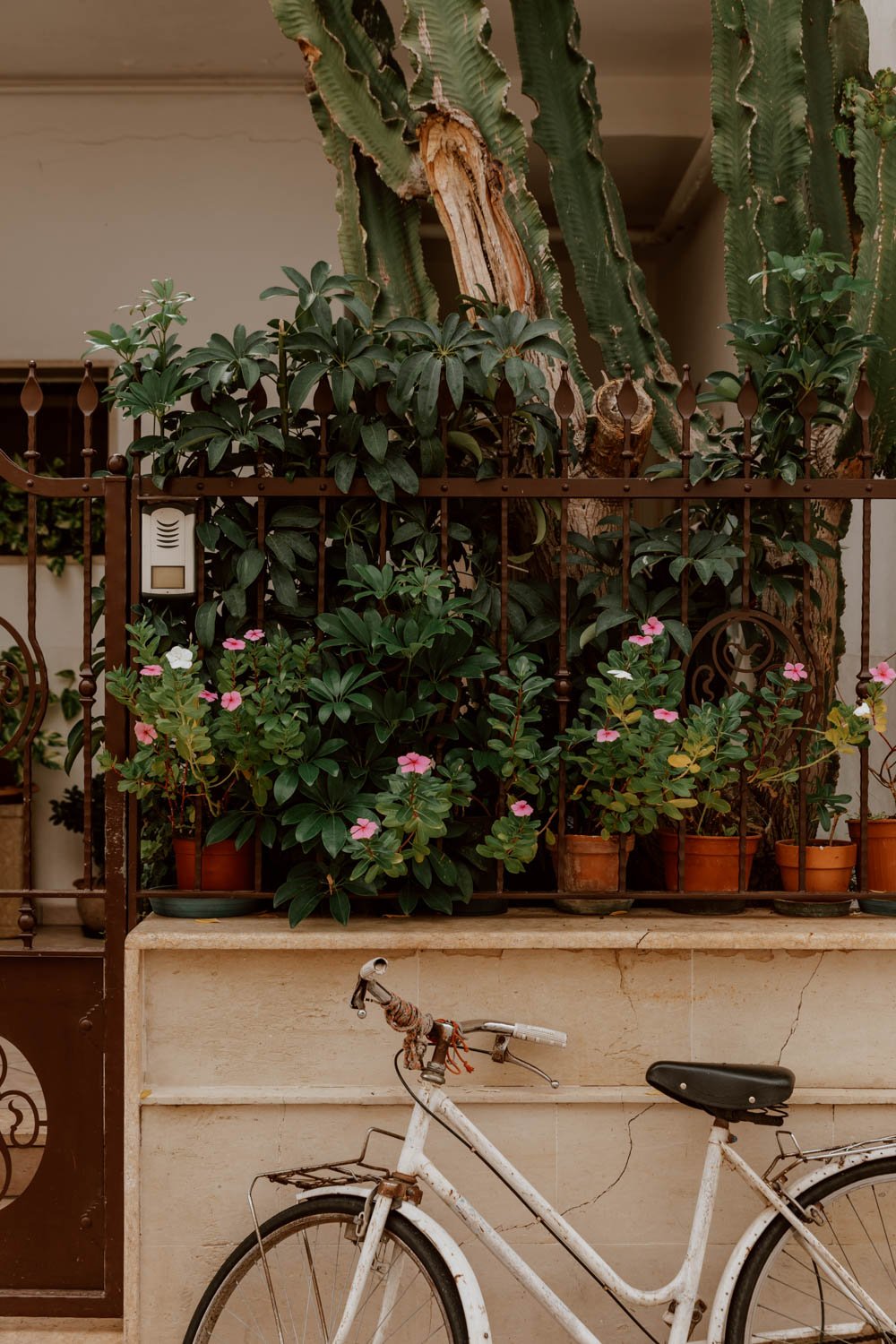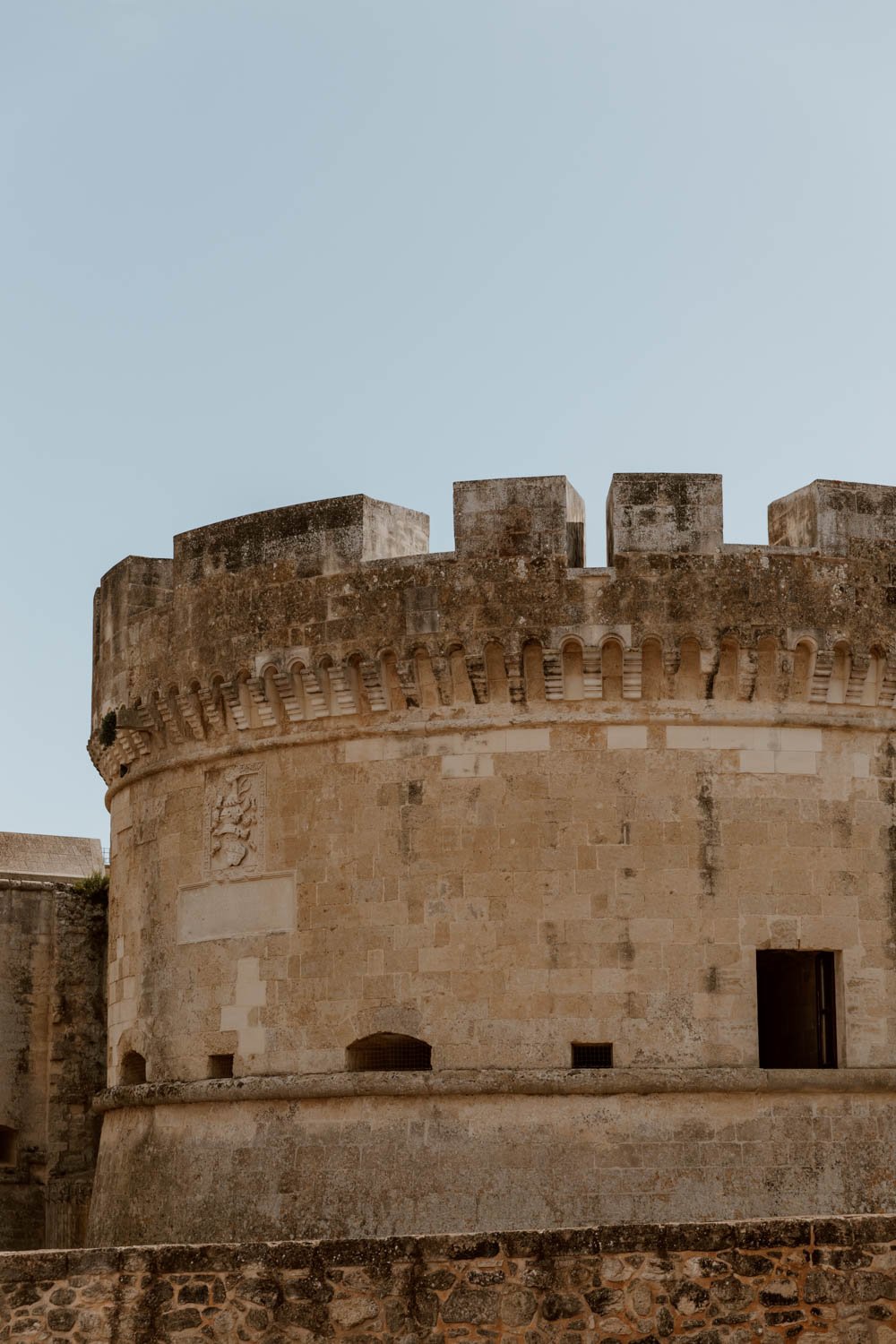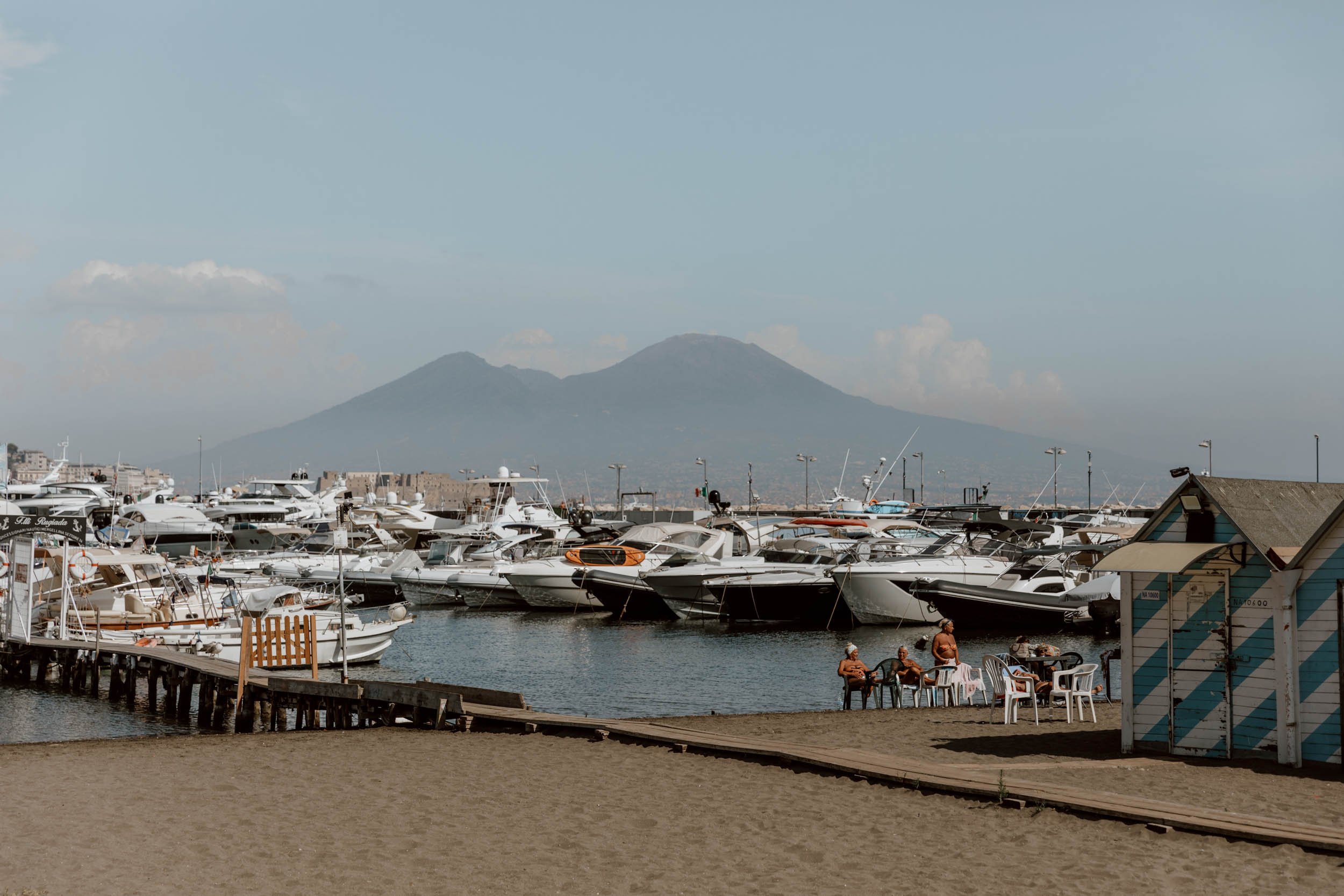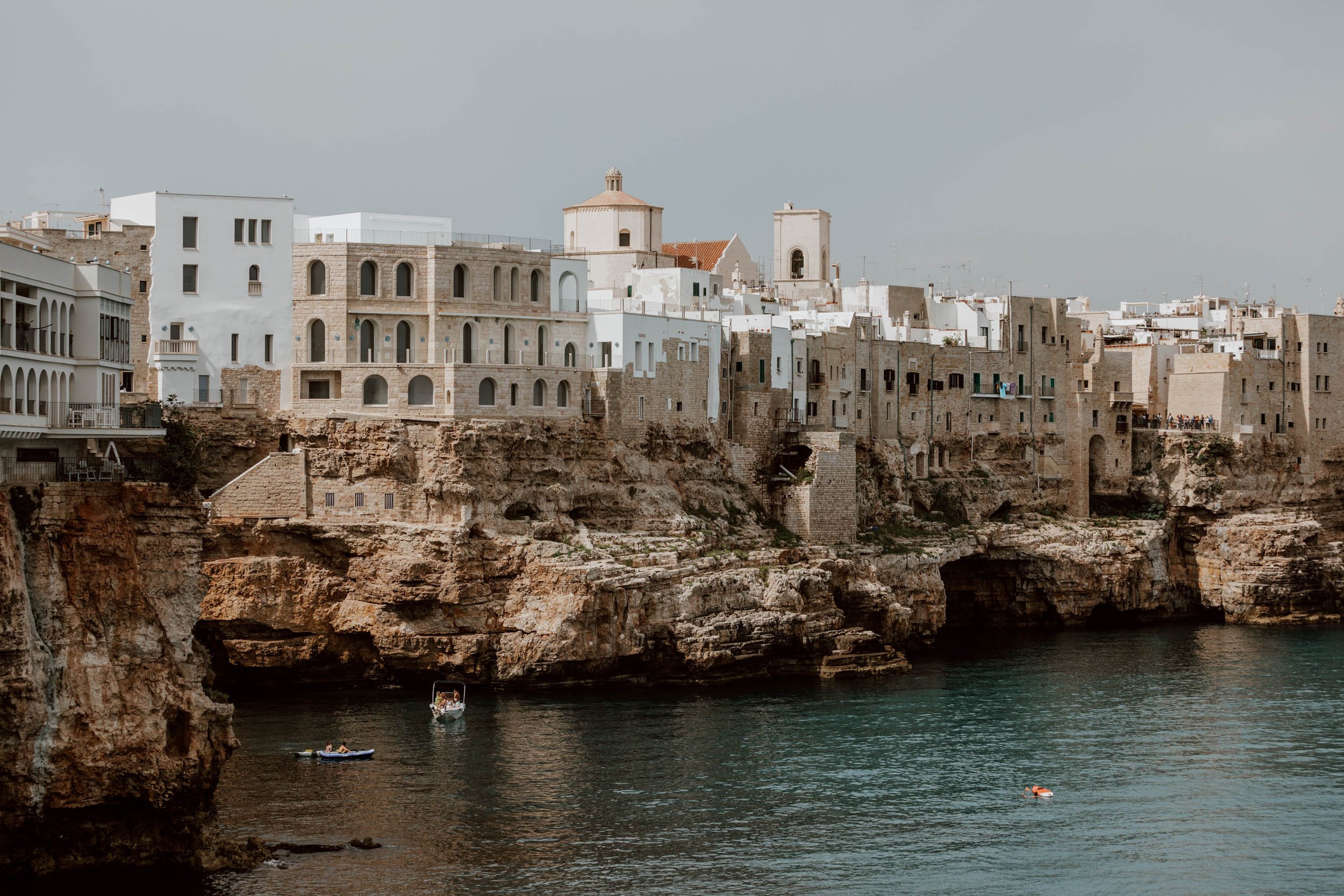As one heads left off the autostrade at Foggia and takes the winding roads high up into the hills of Puglia, it's easy to think you’ve transported yourself much, much further north.
The salted sea becomes a distant memory, and the pale green olive groves and whitewashed buildings are left behind as the landscapes of this notoriously flat southern region of Italy begin to rise and resemble something a little more like the contours of Tuscany or Umbria.
Puglia - the part of Italy between two seas where you can find the stiletto heel of its 'boot' - is best known for its popular east coast towns, cities, and swimming spots come summertime.
We first visited back in 2016, and it’s responsible for kickstarting our passion for travel in Italy. We visited again in 2018, experiencing it in the curious period before spring begins to bloom, and had long planned to head back for another summer there once we’d got better acquainted with other parts of Italy.
The opportunity arose this September, with the chance to return to Puglia coming soon after our Emily’s language school stint in Bologna and our two-week Calabrian road trip.
Is there such a thing as too much Italy in a single summer? Not a chance.
The trip would be split in two distinct parts: a week of revisiting our old favourites and searching out some new on the (now) well-established south-east coast, followed by a week experiencing lesser-known, lesser-visited villages and small towns of Puglia as part of a project by the Italian Tourism Board.
The purpose? To showcase the the range of slow, meaningful travel experiences available across the country’s twenty regions, beyond the better known cities.
And this is why, after the dolce vita delights of Monopoli, Polignano a Mare, Otranto, Ostuni, and Santa Maria di Leuca, we headed northwest toward the rolling green hills of Foggia, toward windmills standing like sentries in the valley dips, wheatfields, and a trio of charming hidden-away villages perched on the foothills of the Apennine mountains.
This is where we wandered in search of a different side of Puglia.
Biccari, Roseto Valfortore, and Faeto | The Hill Towns
When Italian hill towns and villages are featured in the international press, it’s usually to talk about a €1 house sale.
The schemes, where a mayor offers real estate at bargain-basement prices in a dream location, always generate an easy headline and fair amount of buzz (who wouldn’t want a house in Italy?), but the intent behind them is serious. A combination of depopulation and lack of economic opportunities is threatening the viability of these historic communities, and something has to be done to reverse the trend. Offering outsiders the chance to invest, move, and create a new life or business (any sale usually requires a financial commitment far beyond €1) in the village is one part of the strategy; another is tourism.
Linked by a narrow winding road through the forests and farms, Biccari, Roseto Valfortore, and Faeto are relatively isolated, but can be strung together with hiking and cycling activities - or truffle foraging in the right season - for a slower type of tourism, and a Puglia experience immersed in nature and set to the rhythm of authentic village life.
Biccari
Surrounded by forest and peaks, Biccari is an excellent base for those who wish to enjoy the outdoors in Puglia and the Dauni mountain range. It attracted a lot of attention for its own house sale in 2019, as well as other moves to enhance tourism.
There's a network of walking and cycling trails criss-crossing the countryside, picnic spots in open forest, and a popular lake and nature park, all within a short distance from its historical centre.
The village is also part of the Monti della Daunia 'strada dell'Olio Extravergine di Oliva a D.O.P Dauno' itinerary, celebrating this region's production of olive oil. It's possible to taste and purchase from one of three producers in the village: Frantoio Vicarum, Oleficio Checchia and Oleificio Sant'Antonio.
A short drive away, and a sensible stop to pair with a day trip to Biccari, is Lago di Pescara. The lake itself is in a picturesque spot - quite reminiscent of the Scottish Highlands - with picnic benches and a short loop walk around the water. However, we recommend using it as the startpoint for a hike to Monte Cornacchia, the region's highest point (1,151 metres) and known as the 'roof of Puglia'.
Roseto Valfortore
In a valley of the Fortore river, wild roses bloom in late spring.
The roses and the river valley come together to give name to Roseto Valfortore, a beautiful village cut and created from a distinctive local stone by master masons.
One of the 'I Borghi più belli d'Italia' (Most Beautiful Villages in Italy), it won't come as a surprise that Roseto Valfortore is easy on the eye, and this is a place that city dwellers come to get away from it all in the summertime in the fresh mountain air.
With less than a thousand residents, it's a quiet community with a wonderfully preserved historical centre to explore slowly. Enter through the imposing 'Arco della Terra' - the principal gateway to the right of the Palazzo Marchesale - and walk its streets during the afternoon 'reposo' and you really could be forgiven for feeling like you've stepped back several centuries.
We’d be surprised if we’re the only ones who find it looks more like villages in France than what you expect to find the Italian south though!
In the early evenings, we would alway stop for a drink or two at Bar Italia where multiple generations of the village gather to play cards, drink, and socialise.
Faeto
A thirty-minute drive away from Biccari and Roseto, in the little village of Faeto you will hear snippets of a language that is only spoken in three places in the world: here, the opposite village, just across the valley and, bizarrely, Toronto.
Signs in the village bear both Faetar-Cigliàje and Italian, the former an evolution of the Franco-Provençal language brought here by French troops who settled here in the 12th century.
The existence and survival of such linguistic exceptionalism is quite remarkable, and a testament to the tight bonds of community here in the hills, as well as the village’s historic isolation in the ridges and folds of the Dauni mountains.
Pugliese make a point of coming to Faeto on weekends due to its stellar reputation for the black pig, and the village has TWO annual festivals in celebration of the hairy animal which thrives in the natural mountain forests and cooler climate at this altitude. Brought up in the semi-wild using traditional techniques, they’re bred and butchered to make prosciutto di Faeto and many other foodstuffs only found on the menu here.
Due to its privileged mountain setting, there are a few excellent viewpoints in Faeto, with the best found on the Belvedere balcony. Built in 1927 to honour the villagers who fought in World One One, from here you can see the villages of Celle di San Vito and Casteluccio, the hills and forests, and the long flat countryside of lower Puglia extending to the sea on the horizon.
Ginosa, Laterza, and Mottola | The Cave Towns of Puglia
We moved down from the hills to a part of Puglia where the land is shaped by scars.
Scars from the deep cuts and crevices of ravines and canyons formed millions of years ago, and the pockmarks of hundreds of human cave settlements carved within the soft tufa rock slopes.
Like many others, we had driven through this on our first Puglia road trip in order to dip just across the border into the land-locked region of Basilicata. The reason was to visit Matera, the city of caves whose fame has grown exponentially since its designation as European Capital of Culture in 2019 and filming location for James Bond.
However, there’s actually no reason to leave Puglia in search of caves.
Ginosa, Laterza, and Mottola - three relatively off-the-beaten-track canyon towns set within the Terra delle Gravine Regional Natural Park - were also the base of cave communities for centuries. Alongside a collection of beautifully preserved fresco chapels, they offer the chance to reassess what it means to be a 'cave man' as well as enjoy excellent hiking, food, and culture.
GINOSA
Ginosa's ravine and caves are undergoing development for tourism, but beyond a new walkway and some fencing, still remain largely untouched by modernity. Due to this, and the significantly lower visitor numbers in contrast to Matera, a walk between and across both sides of its ravine feels more akin to a nature experience and a raw process of individual discovery.
Rivolta, the area on the right hand side of the dip, hosts a collection of 66 caves on five levels, and is considered one of the most important rock villages in all of Italy. We think it's also the most obvious to get your head around how these structures - extended and shaped by residents to suit their own needs - would have actually functioned as viable abodes for people over centuries. Indeed, there's a level of sophistication and ingenuity to the design of these cave houses - cisterns, ovens, ovens, chimneys, gardens, oil and wine presses - which underpinned how life was planned and lived here. Harsh certainly, but not one that was simply endured.
On the other side, amongst the overgrowth, butterflies and scent of wild thyme, more caves can be explored in the Casale area. It provides the best vantage point to appreciate the layout of Rivolta on the opposite side and enjoy the perspective of the ravine and cave layers underpinning and blending into 'new' Ginosa.
If you are fortunate enough to bump into Carmelo, the self-appointed caretaker of the caves who lives by the cathedral, he is only to happy to show the curious around. He only speaks Italian, but we spent a wonderful hour with him and his sister, learning about how life would have been in the caves, and they’re just the sweetest people.
We spent four nights in Ginosa, using it as a base to explore the other towns in this geologically distinct part of Puglia, and we really liked it. Compact yet lively, it offers pretty little whitewashed streets on a par with those in the Valle d'Itria and is a short drive from the enjoyable stretch of beach and Ionian Sea at the Marina di Ginosa.
You’d be a fool not to pop into Panificio Piccolo as well, a traditional family bakery run by the lovely, welcoming Piccolo.
Mottola
As with Ginosa, cave communities existed here in its canyons for thousands of years - for necessity, protection, concealment, or a combination of all three - but few left such an indelible artistic impression on the stone as Mottola’s own secluded 'Sistine Chapel'.
Situated at the edge of a ravine and in close proximity to railtracks, San Nicola is accessible only with a guide, and its secluded setting a drive outside the town offers little indication of the rich, spiritual and artistic heritage within this church carved and caressed out of a cave.
It was part of the cave village of Casalrotto, which dates it principally to the 11th-13th centuries, but lay undisturbed and unlit for many years. This is part of the reason why its frescoes remain so rich and vibrant, and they are particularly notable for the diversity of styles and influences evident in them: Byzantines, the Crusades, as well as local Puglian methods.
It is only possible to visit inside San Nicola with an official local guide (who has the key!), and it's recommended to reserve ahead of your visit (best to contact Infopoint Mottola, run by Mottola Tourist Information Centre). The guide will meet you in the town, and then you drive out together to the site, with a stop the Chiesa Rupestre di San Gregorio along the way.
Laterza
Perched on the side of Europe's largest canyon, Laterza is the best place to find perspective on the scale of the ravines criss-crossing this area of Puglia, and better appreciate how they have shaped existence here.
Stretching for 12 kms, 500 metres wide at its widest point, and covered in lush vegetation, its 'Gravina di Laterza' should really be better known, and is an excellent location in Puglia for those looking to get out on a hike.
Oasi Lipu is a good option for a day hike in the right conditions, with a challenging yet manageable 7 km hike deep into and out of the Laterza ravine, starting from its panoramic viewpoint small visitor information centre. For keen walkers looking for a slow travel experience of the Terra delle Gravine Regional Natural Park or to link up the towns and region in an alternative manner, Laterza is also on two multi-day walking routes: Stage 6 of the Via Ellenica and Stage 8 of Via Appia/Appia Way.
The pretty town also has a rich heritage for ceramics and is witnessing a slow cultural revival. Our stroll on a quiet afternoon led to several artisan workshops and galleries in old caves, whilst there’s also the new MUMA - Majolica Museum in the upper floor of the Palazzo Marchesale for an insight into the craft and distinctive Majolica of Laterza' style.
The Architect and the Archaeologist in East Puglia
Puglia is famous for its stellar coastline, with bronzed bodies on beaches, colourful parasols in busy lidos, and drippings of la dolce vita a common sight all along the way from Bari down to Brindisi and beyond in summertime.
The final stops on our week exploring lesser-known Puglia were actually in a cluster by one of the most famous beaches and most popular Instagram spots, but offered perspectives and historical insights often overlooked if a beach day and plate of orecchiette is all that’s in store.
Linked and shaped by a common cause of threats and opportunities arriving from the eastern coast, both Acaya and Roca Vecchia have been reevaluated,restored, and rejuvenated to offer an alternative way to understand this area of the Adriatic.
Acaya
Halfway between the Adriatic Sea and city of Lecce, Acaya is one of few remaining fortified villages in Puglia.
Very small, with a permanent population of just 500 people, most traffic comes from passing cyclists on multi-day excursions and day trip tour groups stopping by to understand and appreciate the long-term but short-lived vision of Gian Giacomo dell’Acaya.
Repeated attacks and the Ottoman sacking of Otranto in 1480 led to a full-scale reappraisal of Puglia’s military defences by the Holy Roman Emperor Charles V, and Gian Giacomo was viewed as the ideal candidate to develop a new type of fortress amongst the fields and olive groves of his family’s feudal holding.
Giacomo's vision wasn't simply defensive but rather, in the spirit of the Renaissance, to create an idealised, modernised version of a fortified hamlet: impregnable and capable of sustaining itself through sieges, creating industry and growth, but also serving the needs and livelihoods of its rural population.
The result was the ‘new’ village of Acaya, with its squat castle, moats, fortified walls, and its rational parallel streets planned to thwart incursions.
For today's visitor, it's far easier to penetrate Acaya's defences through the Porta di Acaya than Giacomo may have planned! After a long period of neglect, the castle has undergone tasteful and extensive renovation works in the last two decades, and now hosts temporary exhibitions and cultural events. Entry is €5, but note that you have to plan ahead around the castle's quite specific opening days and hours, which alter according to the time of year.
There are only a handful of businesses in Acaya, so options may be limited during your visit to a single cafe and a single restaurant; we had an excellent lunch at I Minuti Piaceri, which serves tasty local dishes, including an excellent swordfish and pasta specialty, and is popular with hungry cyclists.
Roca Vecchia + Torre Dell’Orso
It’s a short drive through the countryside to go from the architect to the archaeologist.
In a small peninsula twenty kilometres north of Otranto, in the very place where hundreds would come each day to jump, dive, and leap into a photogenic swimming hole, mysteries are being uncovered and new stories revealed about a very, very ancient people.
Visit just a few years ago, and it would have been difficult to distinguish this part of rocky shore and short cliffs from others you'd pass on the Adriatic Coast. Then, word got out and pictures went viral about one of the most beautiful natural swimming holes in the world and, in lockstep with Puglia's rising popularity amongst non-Italian tourists, Grotta della Poesia became a must-visit spot on itineraries.
However, such fame and footfall rang alarm bells for those who valued the site for a very different reason.
Grotta della Poesia is part of the wider Roca Vecchia, where in 1983 Professor Coismo Pagliara discovered walls covered with inscriptions and etchings from distinct and disparate civilisations. Situated in a strategic maritime corridor, just 70km across the water from the shores of Illyria (parts of Albania, Croatia and Bosnia and Herzegovina today), the extensive evidence uncovered since then shows that Roca Vecchia would have been an important place of sanctuary, trade, and cultural exchange for those navigating the central Mediterranean and arriving from Greece. Inhabited from the Neolithic Age (at least two millennia BC) to the second century BC, it is regarded as one of the most important protohistoric locations in Italy.
For one reason or another though, not much was done until 2019 to prevent dozens, then hundreds, then thousands walking in and around it each summer to sunbathe on the rocks and swim in Grotta della Poesia.
Now though, Roca Vecchia is gated, ticketed, and transformed into a protected archaeological site for continued digs, academic research, and visitors. As a result, one of the most Instagram-famous locations in Puglia has undergone a significant change to create the region's newest and most prominent archaeological sites (but from what we saw, some people aren’t aware of the change and ban on swimming until they arrive at the gate in their bathing suits!)
This area is on most Puglia itineraries, but for those that prefer nature over history, the WWF Riserva Naturale Le Cesine would be a good addition to either visit above. A superb spot for twitchers, this 348-hectare protected natural reserve is a haven for birds, including flamingoes, and other native trees, flora, and wildlife.
And, conveniently, once you’re done with the past, you can give yourself the afternoon off on the long stretch of sandy beach at Torre dell'Orso. Fringed by pine forest, and enclosed by cliffs on both sides, it ranks as one of the best beaches in Puglia, with the new-ish holiday village of the same name offers up good options for food and drink before or after! Watersports are popular here - including kayak hire, adrenaline fueled banana boat adventures and even wakeboarding - and the conditions for swimming in the azure waters are generally excellent
-
This article was written in collaboration with iambassador for the 'Viaggio Italiano' Project (Italian National Tourist Board, Ministry of Tourism & Conference of Regions and Autonomous Provinces)
Where to Next?
Inspired to visit Puglia? Head over to our dedicated Puglia travel page for all our guides or check out some of our favourites.
14 Things to Know Before a Puglia Road Trip
8 Reasons to Fall in Love With Puglia
A Short Guide to Alberobello | Puglia’s Trulli Town
A Short Guide to Bari | Your Gateway to Puglia
A Short Guide to Polignano a Mare | Puglia’s Most Famous Beach
A Short Guide to Ostuni | The White City
A Short Guide to Locorotondo | Puglia’s Prettiest Little Town







